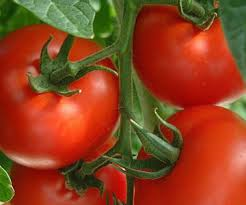Everyone with a polytunnel or glasshouse is tempted to grow tomatoes – and why not? They taste so much better when picked just before eating. Here are a few tips for the best crops.
Choose well-flavoured varieties like Shirley or Alicante. Some traditional varieties like Moneymaker are insipid. If you are buying plants, look for healthy ones about 20cm tall. Yellow leaves indicate poor feeding or cultivation and bluish or purplish leaves indicate chilling: such plants will take time to recover and crop later. Drawn, leggy plants will be the same.
If planting in the soil try to have the plants in slight hollows rather than on top of mounds, so water will soak in rather than run away. Water them in well, and let the ground surface dry off between waterings. Vine tomatoes need support: if using canes put them in before the plants to avoid root damage. Strings are better than canes for plants in grow-bags. Cherry tomatoes are wide and bushy plants, so give them plenty of room to spread.
Feed the plants with high-potash feed as per the instructions, starting when the first fruits appear. Tie in the growing vines to canes or wind the support strings around them regularly, as stems are hard to train when they thicken up. Hook very long trusses up on themselves or higher leaf-stems to keep them up from mud and slugs.
Break out sideways any side-shoots growing from the angles between leaf-stems and the main stem. Snap off upwards any dying bottom leaves to let light and air around the fruit. Bush tomatoes need no training. Pick a tomato by thumbing down on the knuckle just above it while twisting the fruit upwards. The green oil on tomato plants is irritant; wash your hands with soap and water afterwards.
Peter Whyte B Agr Sc (Hort), Nat Dip Sc (Apic), Dip Tr & Ed, MI Hort





